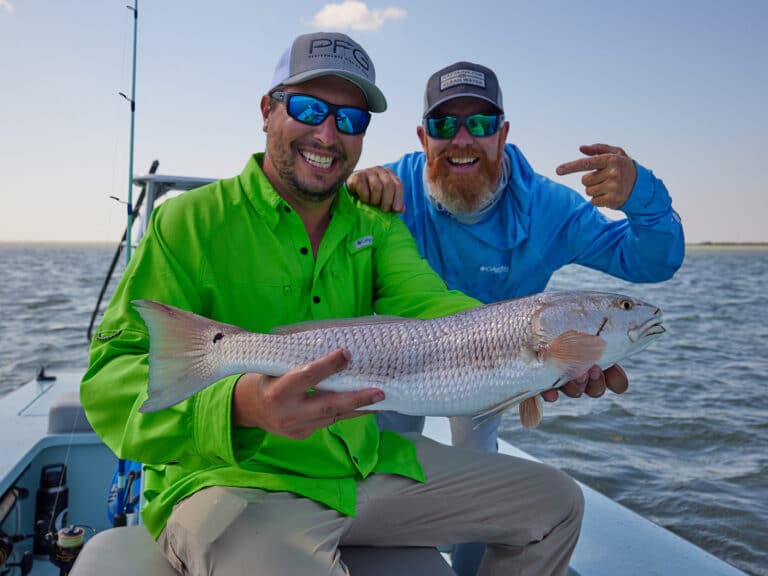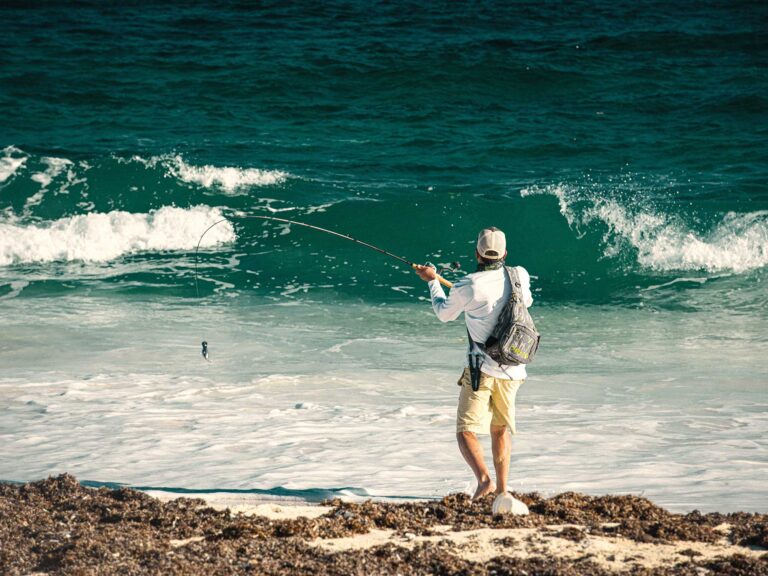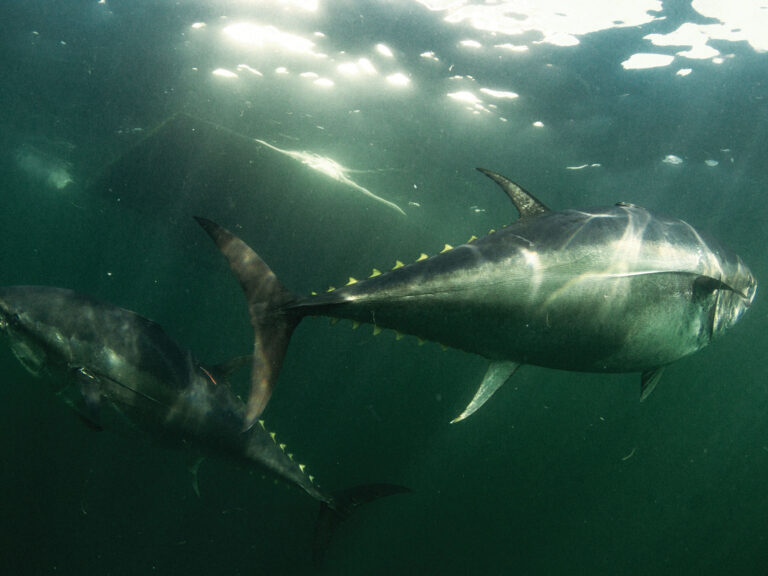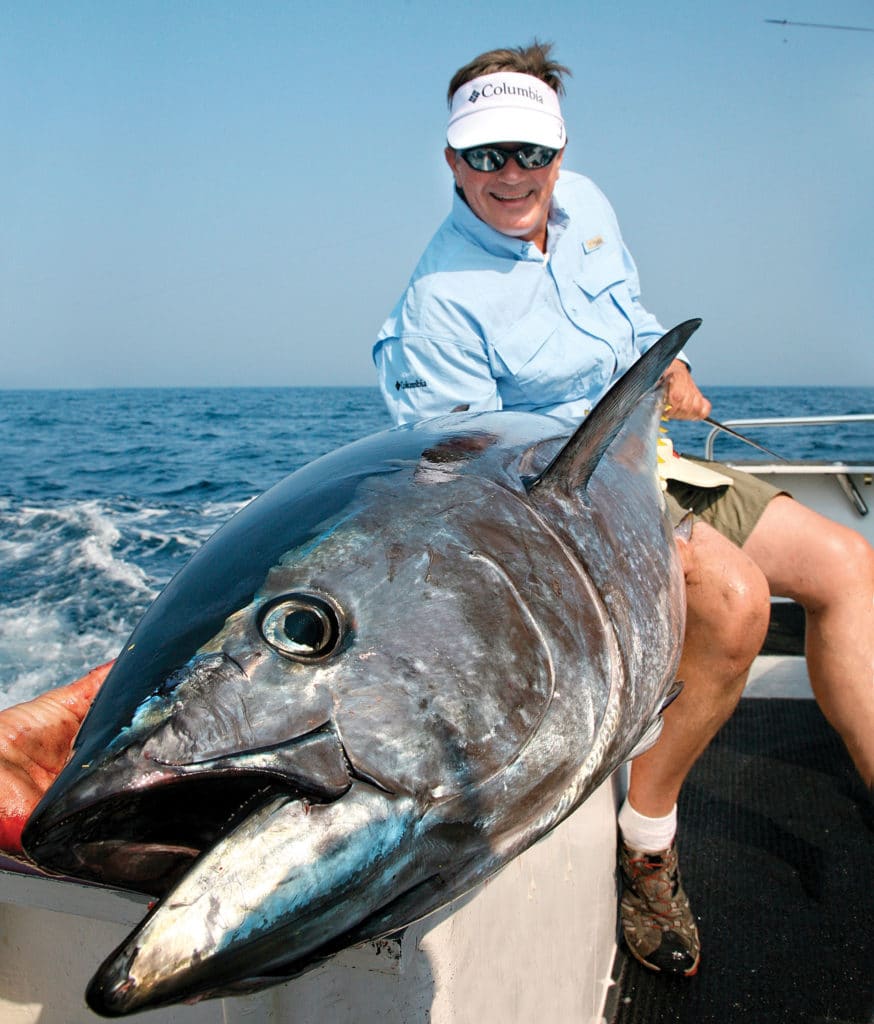
Picking up the trolling pace is a subtle yet primary adjustment for generating more strikes, especially on slow days. Doing so energizes the illusion of panic in a bait spread. If the bite is off, this uptick provokes instinctive strikes when those from hunger are hard to come by.
But what about going in the opposite direction, to a total standstill? Will the unnatural appearance of sinking, lifeless baits and exposed terminal hardware (swivels, leaders and hooks) expose the illusion as fake? Veteran trollers know better; they’ve been using variations of this unorthodox trick to catch fish for decades.
Sink-and-Swim
A tactic I’ve used since my early offshore trolling years is the sink-and-swim. It’s killer on dolphin, and I’ve taken them as heavy as 30 pounds this way. The tactic shines when fish aren’t aggressively feeding. Done correctly, it’s a three-part process, beginning with traditional trolling.
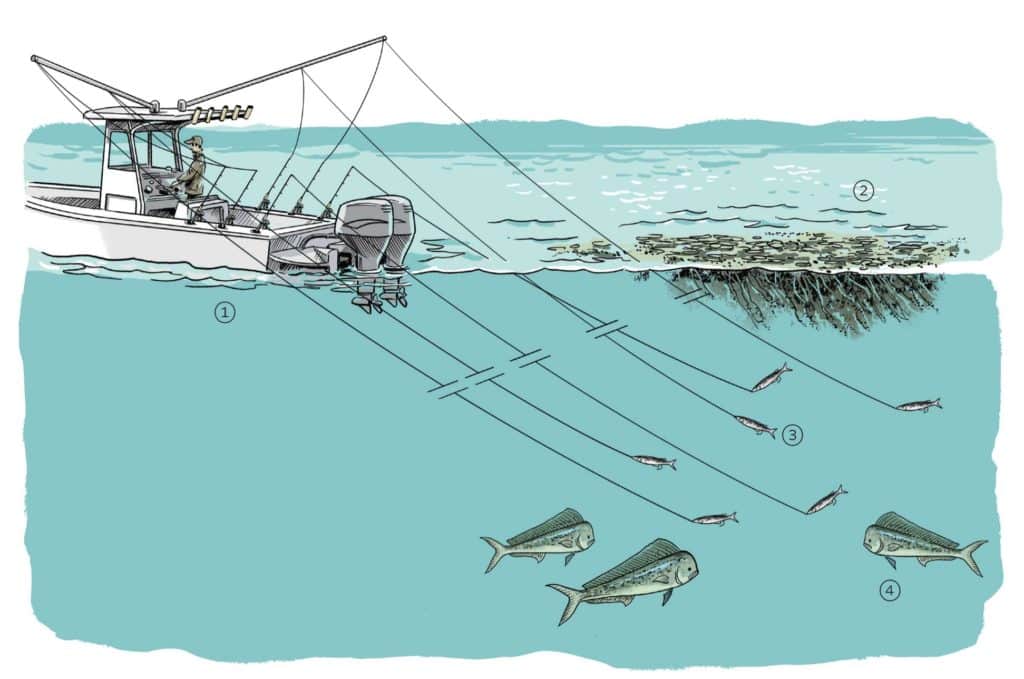
For dolphin, I’ll make a few passes along a weed line or floating debris, or through a promising zone. If unsuccessful, I’ll troll back to the feature (or even into open water rich with flying fish), shift into neutral, and let the baits sink for a couple of minutes. I’ll then rapidly resume trolling speed.
A spread of ballyhoo skipping at the surface and then sinking suddenly presents a novel illusion as the descending baits flash and wobble. Many a bait has been consumed on the drop. However, the strike-triggering illusion occurs when the lifeless baits suddenly race back to the surface in unison, as if they’re frantically avoiding predation. Is it the threat of a competing predator that provokes these instinctive strikes? I believe so because I’ve seen this work many times when fish wouldn’t touch a surface bait.
Subtleties
During the sink, pay close attention to prevent lines from crossing (skirted, skipping and swimming baits each sink at a different rate) or drifting underneath the boat. A slight forward bump of the throttles will remedy this.
Each line should also be monitored for unusual movement, which could reveal a fish swimming upward with a bait. In this situation, wind rapidly, come tight, and set the hook. With dolphin, for example, resume trolling speed because a school might be stalking the baits; forward momentum is crucial for positive hook-sets.
Resume trolling speed rapidly rather than slowly. A sudden burst of prop wash creates a feeding-frenzy-like illusion, whereas the surface-bound baits provoke predatory fish into reacting within the initial seconds of acceleration. Keep the boat aimed straight (an autopilot truly excels here, particularly for multiple hookups) and at trolling speed for a half-minute or so.
Bluefin Bashing
The sink-and-swim works on numerous species, bluefin tuna included. Capt. Joe Trainor, who operates Low Profile out of Avalon, New Jersey, employs the tactic for both bluefins and yellowfins. “It’s often necessary to catch bluefins that won’t come to the surface,” Trainor says. “We troll with eight or nine rods, with our main rods on the bridge and their baits fished some 100 yards back—the way, way back baits, if you will.”
“When we’re marking bluefins on the sonar, I’ll put the boat into a turn and drop one engine into neutral. Let’s say we’re marking them off the port side, and we’ve turned in that direction. The bait on the inside (port) bridge rod will sink the deepest. Sometimes it gets hit as it’s sinking, well before we come out of our turn. If not, it’s likely to get blasted as the boat straightens and it races back to the surface.”
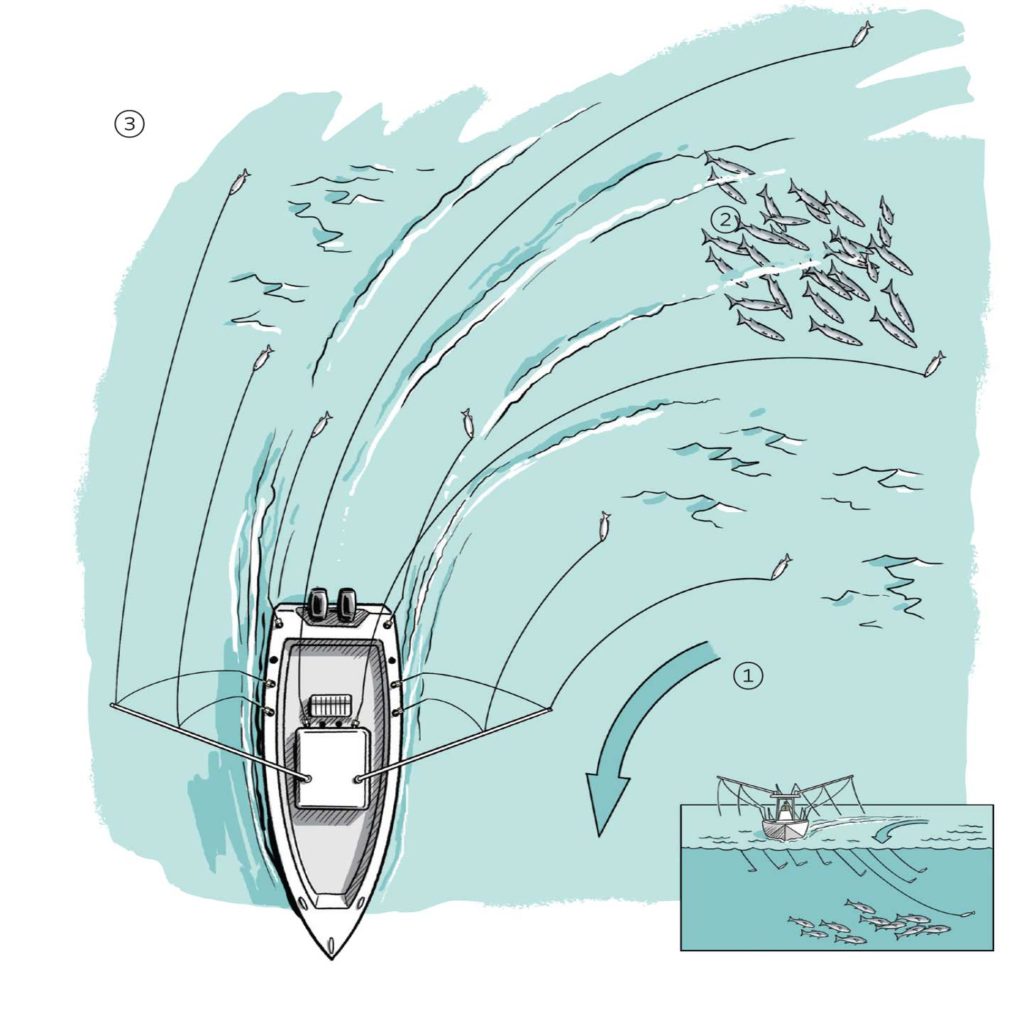
Trainor also takes Low Profile to Isla Mujeres, Mexico, for two months, and Cat Island, the Bahamas, for two months. His sink-and-swim variations also score more yellowfin tuna. “It’s like the technique we use for bluefins,” Trainor says. “But with yellowfins, we tow 11 lines for multiple hookup opportunities. Even with multiples, we don’t discount the sink-and-swim. If we’ve hooked three yellowfins, we don’t reel in the other baits. I’ll bump the boat in and out of gear, and keep the action and remaining baits straight behind the boat.
“During the fight, the other baits are sinking and floundering beneath the surface. By the time we boat that last tuna, they may be 50 feet down. I’ll then resume trolling speed, and yellowfins often crush the baits on their way up. We refer to these as speed-up bites.”
Nearshore Too
The sink-and-swim isn’t just for offshore. Anglers pulling natural baits, spoons and feathers on trolling sinkers, planers and even downriggers benefit from the periodic dips and rises. With weighted lines, the tactic revolves more around slowing the trolling speed versus killing it. Variations also hinge upon depth and bottom makeup (read: snags).
When king mackerel stack up in 60 feet, for example, slowing the trolling pace and enabling baits to fall near bottom, then resuming trolling speed orchestrates a much broader illusion. Rather than a spoon wobbling horizontally through a specific part of the water column, it now also flutters vertically. Both real estate and depth are covered, and the tactic enhances the illusion of an injured, disoriented bait.
This same concept also applies to coastal species the likes of Spanish mackerel, bluefish, striped bass, barracuda, snook, tarpon, cobia and even some groupers on bottom-flirting baits.
Deep Structure
The sink-and-swim excels when trolling subsurface baits around deep wrecks and high-profile structure too. Around a wreck in 120 feet, try slowing way down and letting the baits sink even more. Then go into neutral, paying close attention to both the sonar and fishing lines to avoid snags and tangles. It’s a timing deal. When the deepest baits close in on bottom, resume trolling speed gradually versus instantly when trolling offshore. As the baits—whether spoons, feathers or natural—descend, they become available to a range of species holding at different depths in the water column.
Variations
Variations of the sink-and-swim strategy, adjusted for conditions, fool many species inshore, nearshore and offshore. Whether it’s the full sink-and-swim for dolphin and tuna, or methodically reducing and reacquiring trolling speeds to govern weighted baits, on many occasions it makes the difference between bringing home dinner or letting the proverbial skunk hitch a ride back to the boat ramp.





